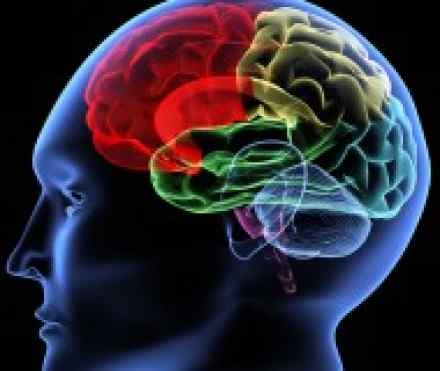
What is it?
Reye's syndrome is a rare but serious condition that causes swelling in the liver and brain. Reye's syndrome most often affects children and teenagers recovering from a viral infection and who may also have a metabolic disorder. Signs and symptoms such as confusion, seizures and loss of consciousness require emergency treatment. Early diagnosis and treatment of Reye's syndrome can save a child's life.
Aspirin has been linked with Reye's syndrome, so use caution when giving aspirin to children or teenagers. Though aspirin is approved for use in children older than age 2, children and teenagers recovering from chickenpox or flu-like symptoms should never take aspirin. Talk to your doctor if you have concerns.
Symptoms
In Reye's syndrome, a child's blood sugar level typically drops while the levels of ammonia and acidity in his or her blood rise. At the same time, the liver may swell and develop fatty deposits. Swelling may also occur in the brain, which can cause seizures, convulsions or loss of consciousness.
The signs and symptoms of Reye's syndrome typically appear about three to five days after a viral infection, such as the flu (influenza) or chickenpox, or an upper respiratory infection, such as a cold. For children younger than age 2, the first signs of Reye's syndrome may be diarrhea and rapid breathing. For older children and teenagers, early signs and symptoms of Reye's syndrome may include:
- Persistent or continuous vomiting
- Unusual sleepiness or lethargy
As the condition progresses, signs and symptoms may become more serious:
- Irritable, aggressive or irrational behavior
- Confusion
- Weakness or paralysis in the arms and legs
- Seizures
- Loss of consciousness
These signs and symptoms require emergency treatment.
Causes
The exact cause of Reye's syndrome is unknown, although several factors may play a role in its development. Reye's syndrome seems to be triggered by using aspirin to treat a viral illness or infection — particularly flu (influenza) and chickenpox — in children and teenagers who have an underlying fatty acid oxidation disorder. Fatty acid oxidation disorders are a group of inherited metabolic disorders in which the body is unable to breakdown fatty acids because an enzyme is missing or not working properly. A screening test is needed to determine if your child has a fatty acid oxidation disorder.
In some cases, Reye's syndrome may be an underlying metabolic condition that's unmasked by a viral illness. Exposure to certain toxins — such as insecticides, herbicides and paint thinner — also may contribute to Reye's syndrome.
Risk factors
The following factors — usually when they occur together — may increase your child's risk of developing Reye's syndrome:
- Using aspirin to treat a viral infection, such as flu, chickenpox or an upper respiratory infection
- Having an underlying fatty acid oxidation disorder
Complications
Most children and teenagers who have Reye's syndrome survive, although varying degrees of permanent brain damage are possible. Without proper diagnosis and treatment, Reye's syndrome can be fatal within a few days.
Diagnosis
There's no specific test for Reye's syndrome. Instead, screening for Reye's syndrome usually begins with blood and urine tests as well as testing for fatty acid oxidation disorders and other metabolic disorders.
Sometimes more invasive diagnostic tests are needed to evaluate other possible causes of liver problems and investigate any neurological abnormalities. For example:
- Spinal tap (lumbar puncture). A spinal tap can help the doctor identify or rule out other diseases with similar signs and symptoms, such as infection of the lining that surrounds the brain and spinal cord (meningitis) or inflammation or infection of the brain (encephalitis). During a spinal tap, a needle is inserted through the lower back into a space below the end of the spinal cord. A small sample of cerebrospinal fluid is removed and sent to a lab for analysis.
- Liver biopsy. A liver biopsy can help the doctor identify or rule out other conditions that may be affecting the liver. During a liver biopsy, a needle is inserted through the skin on the upper right side of the abdomen and into the liver. A small sample of liver tissue is removed and sent to a lab for analysis.
- Computerized tomography (CT) or magnetic resonance imaging (MRI). A head CT or MRI scan can help the doctor identify or rule out other causes of behavior changes or decreased alertness. A CT scan uses a sophisticated imaging machine linked to a computer to produce detailed, two-dimensional images of the brain. An MRI scan uses a strong magnetic field and radio waves rather than X-rays to generate images of the brain.
- Skin biopsy. Testing for fatty acid oxidation disorders or metabolic disorders may require a skin biopsy. During a skin biopsy, a doctor takes a small skin sample (biopsy) for analysis in a lab. A biopsy can usually be done in a doctor's office using a local anesthetic.
References
http://www.mayoclinic.org/diseases-conditions/reyes-syndrome/basics/definition/con-20020083
http://www.nhs.uk/conditions/Reyes-syndrome/Pages/Introduction.aspx
http://www.webmd.com/children/tc/reyes-syndrome-topic-overview
http://www.medicinenet.com/reye_syndrome/article.htm


